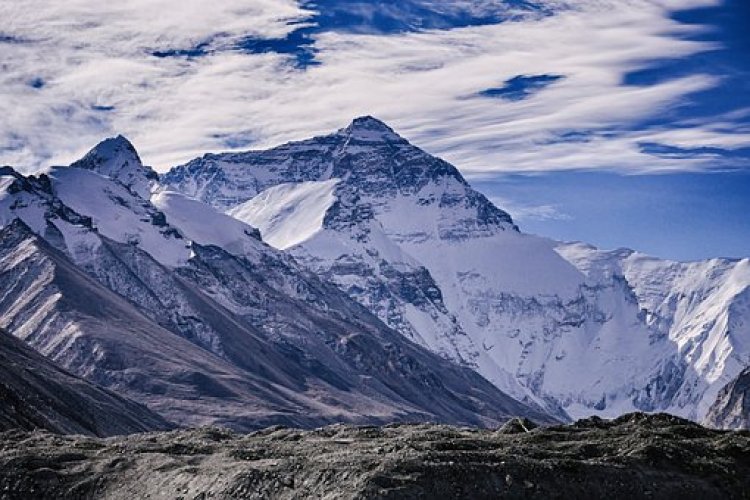Mount Everest of Nepal: Exploring the World's Highest Peak
Discover the world's highest peak, Mount Everest, located in Nepal, and explore its history, geography, challenges, and future. Learn about the Sherpas, environmental issues, and sustainable tourism practices for responsible exploration.

Mount Everest is the world's highest mountain, standing at 8,848 meters (29,029 feet) above sea level. Located in the Himalayas, on the border between Nepal and Tibet (China), Mount Everest is not only a natural wonder, but also a symbol of human endurance, ambition, and cooperation. In this article, we will explore the different aspects of Mount Everest, from its history and geography to the Sherpas and the Everest community, the environmental and social issues, and the future of this iconic mountain.
Climbing Mount Everest
Mount Everest is a challenging climbing destination, known for its extreme altitude, unpredictable weather, and difficult terrain. Over the years, thousands of climbers from around the world have attempted to reach the summit of Mount Everest, and many have succeeded, while others have lost their lives in the attempt. There are several routes to climb Mount Everest, but the most popular ones are the South Col route, which starts from Nepal, and the North Col route, which starts from Tibet.
Climbing Mount Everest requires a lot of preparation and training, both physically and mentally. Climbers need to have experience in high-altitude mountaineering, as well as good health, stamina, and teamwork skills. The climbing season for Mount Everest is typically from April to May, when the weather is more stable, and the mountain is less prone to avalanches and storms. Climbers usually spend several weeks on the mountain, acclimatizing to the altitude and progressing through different camps, before attempting the final push to the summit.
The Sherpas and the Everest Community
The Sherpas are a Nepalese ethnic group that has played a key role in Mount Everest expeditions since the 1950s, when the first successful ascent of the mountain was made by Sir Edmund Hillary and Tenzing Norgay. Sherpas are known for their resilience, mountain skills, and cultural traditions, and have become an integral part of the Everest community. Sherpas work as guides, porters, cooks, and support staff for the climbers, and often risk their lives to ensure the safety and success of the expeditions.
The Everest community is a diverse group of people who share a passion for Mount Everest, including climbers, researchers, environmentalists, journalists, and tourism operators. The Everest community has evolved over the years, as the number and types of climbers have changed, and as the impacts of tourism and globalization have become more visible. The Everest community faces many challenges, such as the risks of accidents, conflicts between climbers, and the need for responsible and sustainable tourism practices.
Environmental and Social Issues on Mount Everest
Mount Everest is not only a natural wonder, but also a fragile ecosystem that is affected by human activities. The impacts of tourism and mountaineering on Mount Everest include the accumulation of waste, the loss of biodiversity, and the degradation of the landscape. In recent years, there have been several initiatives to address these issues, such as the Clean Everest Campaign, which aims to collect and recycle the garbage left by climbers, and the Sagarmatha Pollution Control Committee, which manages the waste and environmental impact of the Everest Base Camp.
Social issues on Mount Everest include the ethics and controversies of climbing and tourism, such as the commercialization of mountaineering, the overcrowding of the mountain, and the risks of exploitation and conflict. There have been several incidents of conflict between climbers, guides, and support staff on Mount Everest, as well as cases of fraud, deception, and misconduct. These issues highlight the need for responsible and ethical practices in mountaineering and tourism, as well as the need for effective regulations and governance.
Future of Mount Everest
The future of Mount Everest is both promising and challenging. On the one hand, Mount Everest remains an iconic and sought-after destination for adventurers and nature enthusiasts, as well as a symbol of Nepal's cultural heritage and national identity. Mount Everest also has the potential to contribute to the development and promotion of Nepal's tourism industry, which is a key driver of the country's economy. However, the future of Mount Everest is also uncertain, as it faces multiple threats, such as the impacts of climate change, the risks of natural disasters, and the need for sustainable and responsible tourism.
One way to ensure the future of Mount Everest is to promote sustainable and responsible tourism practices that minimize the environmental impact of tourism, support local communities, and respect cultural traditions. This could include measures such as reducing the number of climbers, controlling the waste and pollution on the mountain, and involving local communities in the management and benefits of tourism. Another way to ensure the future of Mount Everest is to invest in research and education, which can help us better understand the ecology and culture of the mountain as well as the challenges and opportunities it presents.
Overall, Mount Everest is more than just a mountain, it is a symbol of human achievement, cooperation, and resilience. It is also a reminder of the fragility and complexity of our natural and social systems, and the need for responsible and sustainable practices. The exploration and preservation of Mount Everest require a holistic and inclusive approach, which involves the participation and collaboration of all stakeholders, from climbers and guides to local communities and governments. Only by working together, can we ensure the future of this magnificent peak, and the values it represents.
What's Your Reaction?





































































































